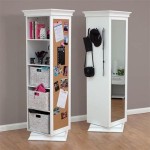Add Frame to Mirror: Enhancing Style and Functionality
Adding a frame to a plain mirror significantly elevates its aesthetic appeal and can even enhance its functionality. Whether seeking a vintage, modern, or rustic look, a well-chosen frame transforms a simple reflective surface into a decorative statement piece. This article explores the various aspects of adding frames to mirrors, from choosing the right frame style and material to the practical considerations of installation.
Choosing the Right Frame Style
The style of the frame should complement both the mirror and the surrounding décor. For a classic look, ornate wood frames with intricate carvings or gilded finishes can add a touch of elegance. Conversely, a sleek, minimalist metal frame complements modern or contemporary interiors. For a rustic or farmhouse aesthetic, reclaimed wood or frames with a distressed finish can be an excellent choice. The size and shape of the mirror also influence frame selection. Large, rectangular mirrors often benefit from wider, more substantial frames, while smaller, circular mirrors might suit a delicate, less imposing frame.
Consider the existing color palette and style of the room when choosing a frame. A frame that clashes with the surrounding furniture or wall color can detract from the overall aesthetic. In rooms with bold patterns or vibrant colors, a simpler frame can provide a sense of balance. Conversely, a statement frame can add a focal point to a room with more subdued décor.
Selecting Appropriate Frame Materials
Frame materials range from traditional wood and metal to more contemporary options like plastic and composite materials. Wood frames offer a timeless appeal and can be stained or painted to match any décor. Hardwoods like oak and mahogany provide durability and a rich, luxurious feel. Metal frames, particularly those made of aluminum or wrought iron, offer a sleek, modern look and are often more resistant to moisture and damage.
Plastic frames offer a budget-friendly alternative and are available in a wide variety of colors and finishes. However, plastic frames might not offer the same level of durability or aesthetic appeal as wood or metal. Composite materials, such as medium-density fiberboard (MDF), can provide a cost-effective and versatile option. MDF can be molded into various shapes and easily painted or finished to mimic the look of more expensive materials.
The environment in which the mirror will be placed also influences material selection. In humid environments like bathrooms, moisture-resistant materials like metal or treated wood are preferable to prevent warping or damage.
Methods for Attaching the Frame
Several methods exist for attaching a frame to a mirror, each with its own advantages and disadvantages. Adhesive-based methods involve using specialized mirror adhesive or construction adhesive to bond the frame directly to the mirror's surface. This method is suitable for lighter frames and provides a clean, seamless look. However, it requires careful application to avoid damaging the mirror's reflective surface.
Mechanical fasteners, such as clips or brackets, offer a more secure attachment method, particularly for heavier frames. Clips are typically attached to the back of the frame and grip the edges of the mirror, while brackets are screwed into both the frame and the wall or a backing board. This method is generally more robust but might require more complex installation.
For framed mirrors intended to be hung, the frame itself can often incorporate hanging hardware. This typically involves D-rings or wire attached to the back of the frame. Ensuring the hanging hardware is appropriately sized and securely attached is crucial for safety and stability.
Some mirrors are designed with a recessed edge or rabbet specifically for framing. This allows the frame to sit flush with the mirror's surface, creating a polished and professional look. For mirrors without a rabbet, spacers or shims might be necessary to create a gap between the frame and the mirror's surface, allowing for expansion and contraction and preventing damage.
Regardless of the chosen method, ensuring proper measurements and a precise fit between the frame and the mirror is crucial for a successful and aesthetically pleasing outcome. Considering the weight of the frame and the type of wall it will be mounted on is also essential for selecting appropriate hanging hardware and ensuring secure installation.

How To Frame Out That Builder Basic Bathroom Mirror For 20 Or Less

How To Add A Frame Your Bathroom Mirror

How To Frame A Mirror Sand And Sisal

Diy Stick On Mirror Frame Sawdust Sisters

Diy Bathroom Mirror Frame With Molding The Happier Homemaker

How To Frame A Bathroom Mirror

The Kids Bathroom Mirror Gets Framed House Of Hepworths

Diy Mirror Frame Remodelaholic

How To Transform A Builder Grade Mirror Add Frame

Mirror Stuck On The Wall Add A Frame To An Plate Glass In Minutes Kits Bathroom Mirrors Diy








